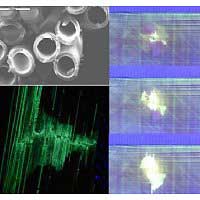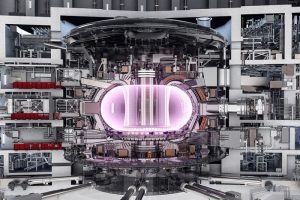Extremes of temperature can cause small cracks to open in the superstructure of spacecraft, as can impacts by micrometeroids. Cracks build up, weakening the spacecraft until a catastrophic failure becomes inevitable.
However, engineers at the Department of Aerospace Engineering, University of Bristol, UK have taken a step towards the spacecraft that could fix itself.

To replicate the human process of healing small cracks before they can open up into anything more serious, the team replaced a few percent of the fibres running through a resinous composite material with hollow fibres containing adhesive materials. Ironically, to make the material self-repairable, the hollow fibres had to be made of an easily breakable substance: glass. “When damage occurs, the fibres must break easily otherwise they cannot release the liquids to fill the cracks and perform the repair,” says Christopher Semprimoschnig, at the European Space Technology Research Centre.
In the airless environment of space, the mechanical “veins” have to be filled with resin and a hardener that leak out and mix when the fibres are broken. Both must be runny enough to fill the cracks quickly and harden before it evaporates.
“We have taken the first step but there is at least a decade to go before this technology finds its way onto a spacecraft,” says Semprimoschnig.
Doubling spacecraft lifetimes means that mission planners could contemplate missions to far-away destinations in the Solar System that are currently too risky.
Via ESA.
Related: Self-healing paint for cars.







